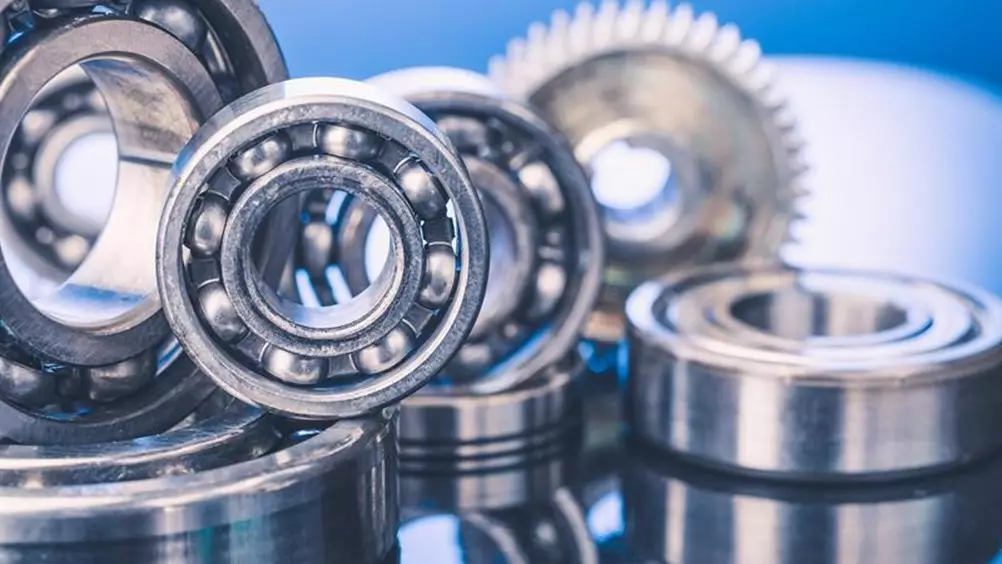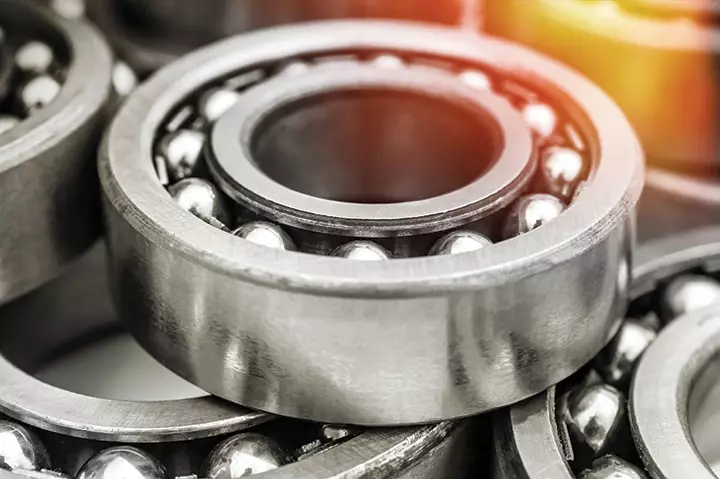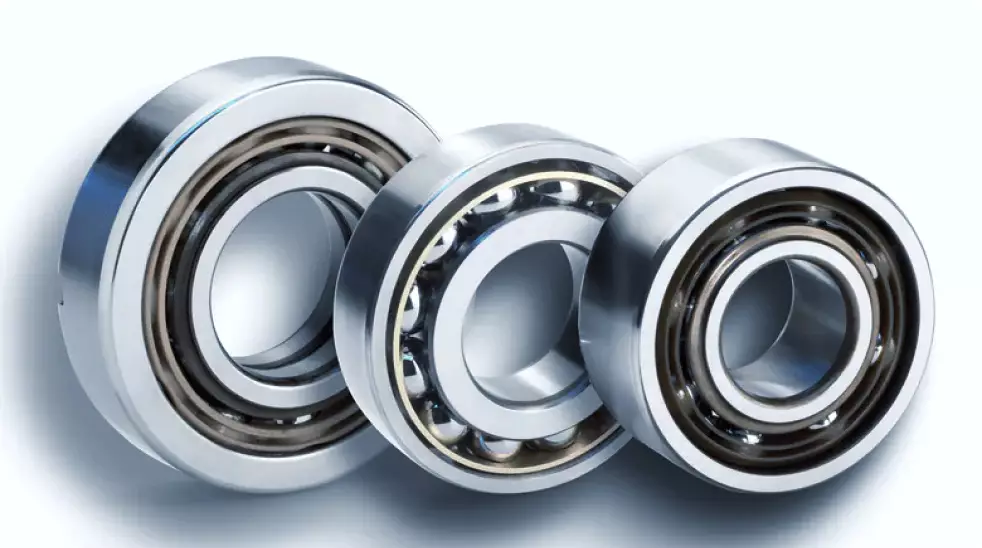
The Basics of Static Load Carrying Capacity in Bearings
The ability of bearings to withstand static and dynamic loads is essential for their proper functioning. Static load carrying capacity determines a bearing’s ability to withstand loads at rest. In this article, we will explore the importance of static load carrying capacity in bearing selection.
What is Static Load Carrying Capacity?
Static load carrying capacity, also known as the basic static load rating (C₀), is the maximum load a stationary bearing can support without causing permanent deformation of its components. It reflects the bearing’s ability to withstand external forces while not in motion, ensuring that the raceways and rolling elements remain undamaged under stress.
This rating is defined by international standards such as ISO 76, which specify that static load capacity corresponds to the load that produces a permanent deformation of 0.01% of the rolling element diameter. It is a critical parameter in bearing selection, especially in applications where bearings are subjected to heavy or sustained loads without rotation.
Manufacturers provide C₀ values in their catalogs, allowing engineers to compare bearing options and select those that can safely accommodate expected static forces.
How to Calculate the Static Load Carrying Capacity of a Bearing
When it comes to bearings, the static load carrying capacity is important. Static load refers to the maximum amount of weight or load that a bearing can support without permanent deformation. Calculating the static load carrying capacity is crucial to ensure that a bearing is suitable for a given application. We will discuss the formula and methods for calculating the static load carrying capacity in bearings.
Load Carrying Capacity from the Schaeffler Group
Formula for Calculating Static Load Carrying Capacity
To calculate a bearing’s static load carrying capacity, use the formula: C₀ = (P₀ / F₀) × C
pibsales.com. This formula means that you take the applied static load (P₀), divide it by a load factor (F₀), and multiply by the bearing’s basic dynamic load rating (C).
The load factor, F0, considers the type of bearing, the direction of the load, the lubrication conditions, and other factors that can affect the bearing’s performance. It is typically provided by the bearing manufacturer or can be found in bearing catalogs.
Methods for Calculating Static Load Carrying Capacity
To calculate the static load carrying capacity of a bearing, the following steps should be taken:
- Determine the static load applied to the bearing, P0, in units of Newtons (N) or pounds (lbs). This can be calculated based on the weight of the equipment or machinery that the bearing is supporting.
- Determine the load factor, F0, based on the bearing type and other relevant factors. This can be obtained from the bearing manufacturer or bearing catalogs.
- Determine the basic dynamic load rating, C, of the bearing, which is a value provided by the bearing manufacturer. It represents the load under which the bearing can operate for one million revolutions without experiencing failure.
- Use the formula C0 = (P0 / F0) x C to calculate the static load carrying capacity, C0, of the bearing.
Example Calculation
The basic formula for calculating static load carrying capacity is:
C0 = Fr / k
Where C0 is the static load carrying capacity, Fr is the applied radial load, and k is the bearing factor, which considers the bearing geometry and material properties. The bearing factor varies depending on the bearing type and size.
For ball bearings, the bearing factor k is calculated as:
k = (d / D)^(2/3) × (10/3 + 5 / 4 × e)
where d is the bore diameter, D is the outer diameter, and e is the contact angle. The contact angle is the angle between the line joining the centers of the balls and the raceway.
For roller bearings, the bearing factor k is calculated as:
k = 1 / (log10(Cr / Fr) – 0.15 × (n / 1000))
where Cr is the basic dynamic load rating, Fr is the applied radial load, and n is the rotational speed in revolutions per minute.
To calculate the static load carrying capacity, we need to determine the maximum allowable contact pressure between the rolling elements and raceways. This contact pressure is a function of the bearing geometry and the material properties. By applying Hertz’s contact theory, we can calculate the maximum allowable contact pressure and the corresponding static load carrying capacity.
For ball bearings, the maximum allowable contact pressure is calculated as:
p0 = 1.7 × E × (d / D)^(1/2)
where E is the Young’s modulus of the material.
For roller bearings, the maximum allowable contact pressure is calculated as:
p0 = (Cr / (0.116 × d × B))^0.3333
where B is the roller width.
Examples of how to calculate static load carrying capacity are available in bearing manufacturers’ catalogs and technical manuals. These examples provide specific formulas and tables for different bearing types and sizes.
Limitations of Static Load Carrying Capacity
It is important to note that the static load carrying capacity of a bearing has some limitations, which include:
| Factor | Effect on Static Load Capacity |
| Temperature | High temperatures reduce material strength, decreasing load capacity (bearings soften at elevated temps). |
| Time under load | Long-duration static loads (beyond a few seconds) can cause material fatigue and permanent deformation. |
| Vibration/Shock | Shock or vibration can lead to deformation even if static load limits aren’t exceeded. |
| Lubrication | Inadequate lubrication can cause failure at loads below the static rating. |
| Alignment | Misalignment of the bearing can result in failure under otherwise acceptable loads. |
Importance of Static Load Carrying Capacity in Bearing Selection
The static load carrying capacity of a bearing is closely related to its material composition, design, and manufacturing process. Bearings with higher static load carrying capacity are typically made from stronger materials and have a more robust design that can withstand heavy loads. In contrast, bearings with lower static load carrying capacity are usually made from softer materials and have a more delicate design that is suitable for lighter loads.
When a bearing is subjected to loads that exceed its static load carrying capacity, it can lead to permanent deformation or damage, which can affect its performance and lifespan. For example, if a bearing is exposed to heavy loads that it cannot support, it may experience plastic deformation, resulting in increased friction and reduced efficiency. In extreme cases, the bearing may fail, leading to costly downtime and potentially hazardous situations.
To ensure that bearings have a sufficient static load carrying capacity, it is crucial to consider several factors during the selection process. These factors include the expected loads, the operating conditions, and the desired level of reliability and performance. It is also essential to consider the type of bearing, such as ball bearings, roller bearings, or plain bearings, as each type has its unique static load carrying capacity characteristics.
Conclusion
The static load carrying capacity is important when selecting bearings for any application. A bearing with a higher static load carrying capacity can provide better performance, reliability, and lifespan, while a bearing with a lower static load carrying capacity may lead to premature failure and safety risks. By considering the expected loads and operating conditions, as well as the desired level of reliability and performance, engineers can select the most suitable bearing with the appropriate static load carrying capacity for the application.
Still have a question or need to discuss something? Contact us to get help.
Frequently Asked Questions
Q: What is static load carrying capacity of a bearing?
Answer: It’s the maximum load a bearing can handle when stationary without incurring permanent damage, also known as the static load rating (C₀).
Q: How do you calculate a bearing’s static load rating?
Answer: By using the formula C₀ = (P₀/F₀) × C, where P₀ is the applied static load, F₀ is a load factor, and C is the bearing’s basic dynamic load rating.
Q: What factors affect static load capacity of bearings?
Answer: Factors like high temperature, long load duration, shock/vibration, poor lubrication, and misalignment can all reduce a bearing’s effective static load capacity. In other words, even within the static rating, real-world conditions matter.
Q: Static vs Dynamic Load Capacity – what’s the difference?
Answer: Static load capacity is the max load a bearing can sustain without permanent deformation when not moving, while dynamic load capacity refers to the load a bearing can endure under rotation for a specified life (usually 1e6 revolutions for the L10 life). Interestingly, a bearing’s static capacity (C₀) is typically higher than its dynamic capacity because the static rating is a one-time limit, whereas dynamic rating relates to fatigue over time.
What is a static safety factor in bearing selection?
Answer: It’s a recommended factor of safety applied to static load capacity. Engineers divide the bearing’s C₀ by the expected max static load to get a safety factor (often aiming for 2+). A higher static safety factor (e.g. 5 or 6 for heavy shock loads) indicates extra margin to prevent permanent damage.









 Short Rigid Couplings
Short Rigid Couplings Controlflex Couplings
Controlflex Couplings Jaw Couplings
Jaw Couplings Oldham Couplings
Oldham Couplings Bearing Locknuts – TCN
Bearing Locknuts – TCN Double Wide Shaft Collars
Double Wide Shaft Collars Heavy Duty Shaft Collars
Heavy Duty Shaft Collars International Series Shaft Collars
International Series Shaft Collars Keyed Shaft Collars
Keyed Shaft Collars Mountable Shaft Collars
Mountable Shaft Collars Quick Clamping Shaft Collars
Quick Clamping Shaft Collars Set Screw Shaft Collars
Set Screw Shaft Collars Thin Line Shaft Collars
Thin Line Shaft Collars Threaded Shaft Collars – Pacific International Bearing Products
Threaded Shaft Collars – Pacific International Bearing Products Two-Piece Shaft Collars
Two-Piece Shaft Collars Friction Bearing Universal Joints
Friction Bearing Universal Joints Needle Bearing Universal Joints
Needle Bearing Universal Joints

